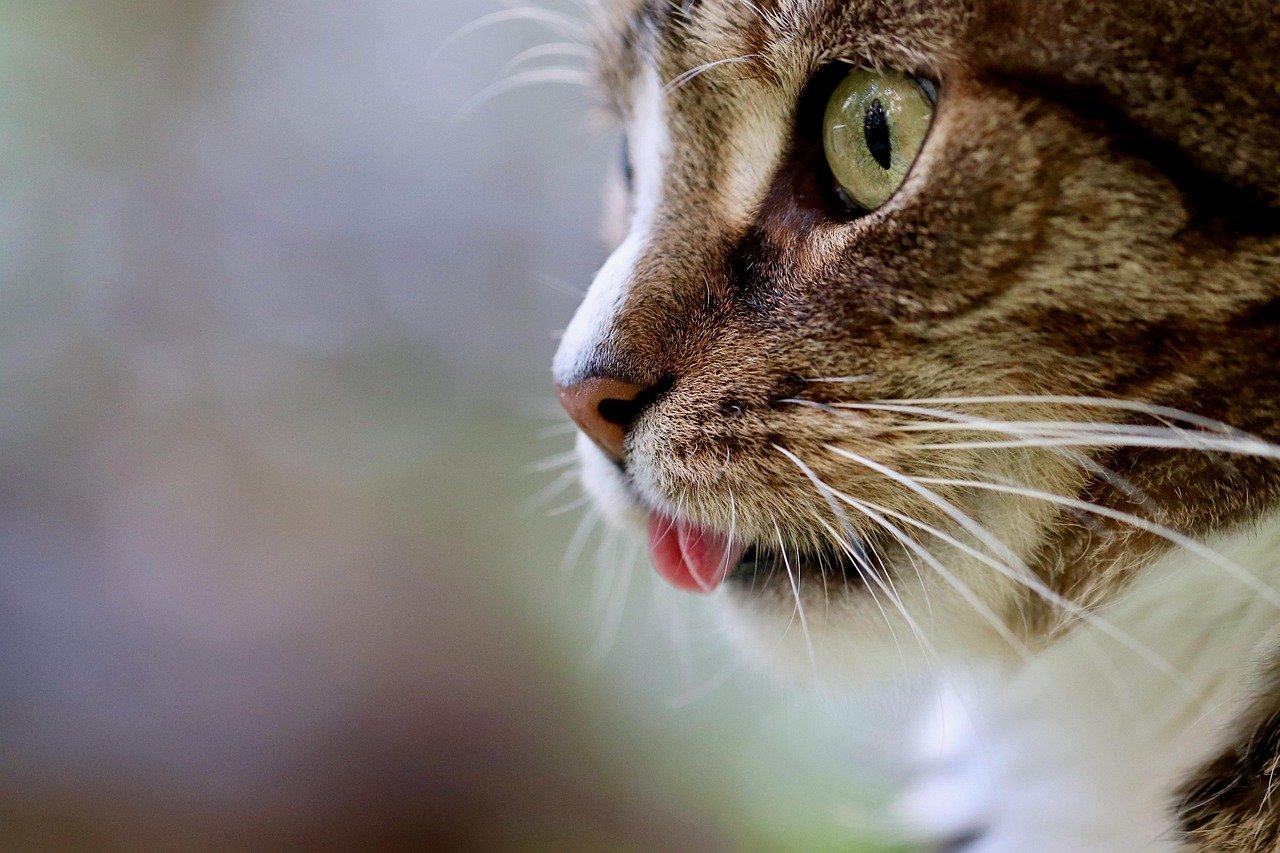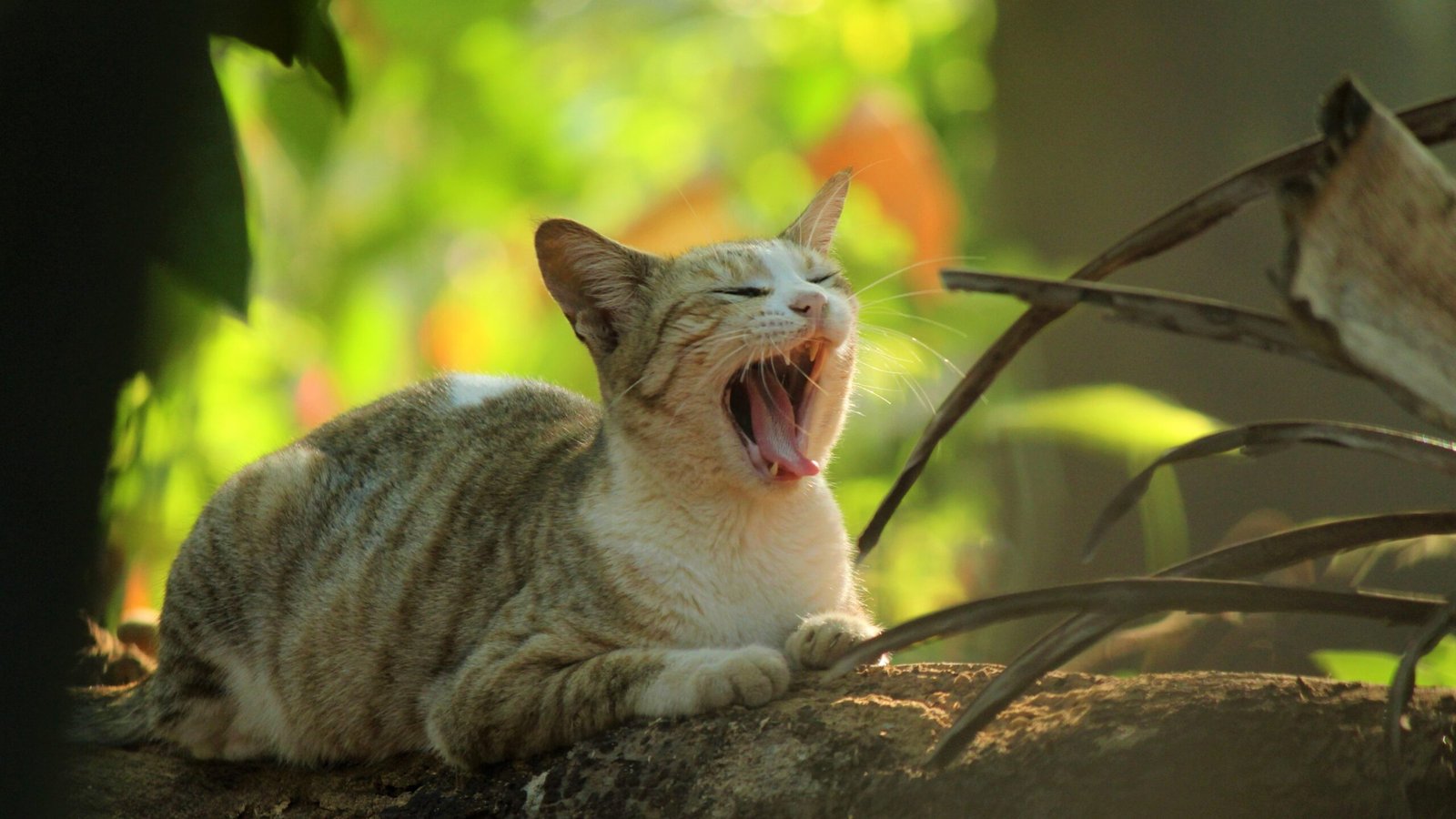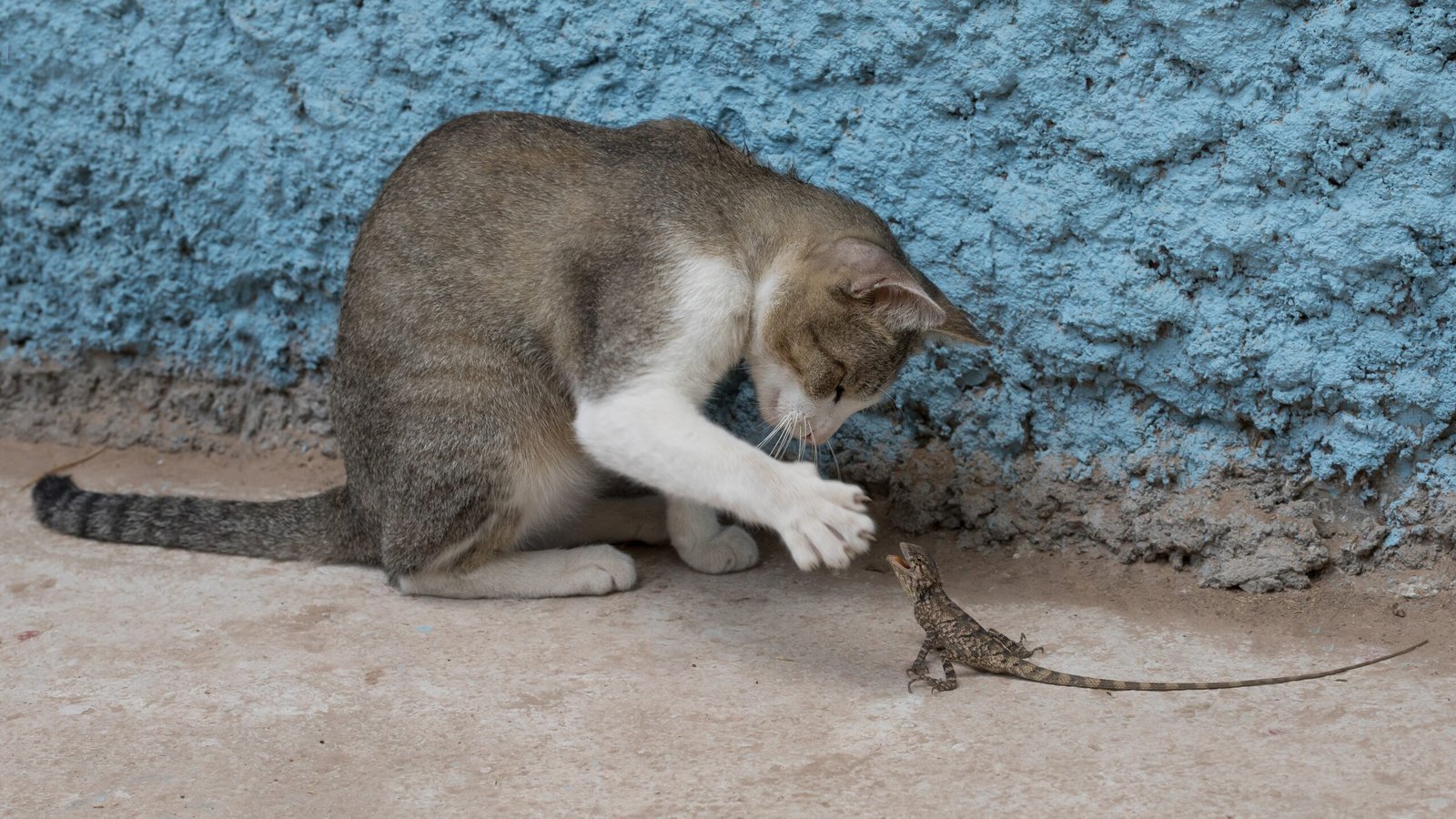What if I told you that the little things you do each day could be the secret to your cat’s deepest sense of happiness? Cats, with their mysterious glances and quirky habits, are far more sensitive than they let on. They crave safety, routine, and reassurance in ways that often surprise us. Sometimes, the tiniest gestures—a gentle word, a cozy blanket, or even a consistent feeding time—can mean the world to them. For every cat lover who’s ever wondered how to help their feline friend feel truly at home, here are 10 small daily choices that make a massive difference in your cat’s sense of security.
Consistent Feeding Times

Have you ever noticed your cat waiting patiently by their food bowl at the same time every day? Cats absolutely thrive on routine, and feeding them at consistent times helps them feel safe. When meals are predictable, your cat learns to rely on you and trust that their needs will always be met. This predictability can greatly reduce anxiety, especially for cats who have faced uncertainty or hunger in the past. It’s more than just food—it’s a daily promise. Even when life gets busy, sticking to a regular feeding schedule is a silent reassurance that speaks volumes to your cat. Plus, it helps prevent overeating and keeps their digestive system happy. Try setting an alarm on your phone if you’re forgetful, and watch how much calmer your cat becomes.
Designated Safe Spaces

Every cat needs a little hideaway—a retreat where they can disappear when the world feels too loud. Creating cozy, designated safe spaces around your home gives your cat a sense of control. Whether it’s a soft blanket in a quiet corner, a cardboard box under the bed, or a covered cat cave, these havens let your feline friend recharge. Make sure these spots are away from busy foot traffic and noisy appliances. Some cats prefer high perches, while others like to burrow low; pay attention to their favorite resting spots and enhance them. Never disturb your cat when they’re in their sanctuary. This respect for their boundaries builds trust and helps them feel secure on their own terms.
Gentle Handling and Respectful Touch

Touch can be a language of love or a source of stress, depending on how it’s offered. Cats are sensitive to how they’re handled; too much roughhousing or sudden grabs can make them feel threatened. Always approach your cat slowly, let them sniff your hand, and wait for their invitation. Petting on the head or under the chin is usually safe, but avoid the belly unless you know your cat enjoys it. If your cat walks away, let them—forcing affection can break trust. Over time, gentle and respectful touch teaches your cat that your hands are safe, not scary. You might notice them seeking you out more often, asking for those comforting strokes.
Daily Playtime and Mental Stimulation

It’s easy to forget that our domestic cats are descended from fierce hunters. Without playtime, their instincts get bottled up, leading to stress or even mischief. A few minutes of interactive play every day—think feather wands, laser pointers, or crinkly toys—does wonders for your cat’s confidence. Play isn’t just fun; it’s a way for your cat to express natural behaviors in a safe environment. Rotate toys regularly to keep things exciting and challenging. You’ll notice your cat becoming more relaxed and less prone to anxiety or boredom. Even older cats benefit from gentle play, so never underestimate the power of a little daily adventure.
Soft, Predictable Voices

Cats are like emotional sponges—they pick up on your tone and energy. Loud voices or sudden noises can make them jumpy or withdrawn. Speaking softly and using a calm, predictable voice helps your cat feel safe around you. Try calling their name in a gentle tone, or singing a quiet melody when you’re together. Over time, your cat will associate your presence with comfort and reassurance. This is especially helpful when introducing new people or experiences. Even a simple “good morning” said softly can make your cat’s day start on a positive note. It’s amazing how much your voice can soothe their nerves.
Respect for Alone Time

Just like humans, cats need their alone time to recharge. It’s tempting to scoop them up for cuddles whenever you see them, but respecting their boundaries is key to building trust. If your cat retreats to a quiet spot or turns their back, let them be. They’ll seek you out when they’re ready for attention. This respect teaches your cat that they’re safe to control their own environment. Over time, you’ll notice them becoming more confident and secure, knowing that they’re not forced into interactions. It’s a simple act of trust that pays off in a deeper, more loving bond.
Clean, Fresh Litter Boxes

Imagine if your bathroom was always dirty or unpredictable—unpleasant, right? A clean litter box is non-negotiable for your cat’s sense of security. Scoop daily, change the litter regularly, and keep the box in a quiet, accessible location. Avoid placing it near loud appliances or high-traffic areas, which can make your cat feel exposed. If you have multiple cats, provide one box per cat, plus an extra, to prevent territorial disputes. A fresh, inviting litter box tells your cat that their needs matter and their space is respected. You’ll also prevent unpleasant accidents around the house.
Gradual Introductions to New People or Pets

Cats aren’t always the social butterflies we wish they were, especially when it comes to new faces. Sudden introductions can trigger fear or aggression, disrupting their sense of safety. Introduce new people or animals slowly and calmly, allowing your cat to observe from a distance at first. Use treats and praise to create positive associations. Never force interactions—patience is your best friend here. Over time, your cat will learn that new things aren’t always threats. This careful process helps them adapt with confidence, instead of hiding or lashing out.
Routine Grooming Sessions

Grooming isn’t just about keeping your cat looking pretty; it’s a powerful bonding ritual. Brushing your cat daily, even for a few minutes, can help them feel secure and loved. Use gentle strokes and pay attention to their body language—if they start to squirm, take a break. Some cats adore being brushed, while others need time to get used to it. Grooming also gives you the chance to check for any health issues, like lumps or fleas, before they become big problems. Over time, these sessions become moments of trust that reinforce your role as a caring, attentive companion.
Familiar Scents Around the Home

Cats navigate their world through scent more than sight or sound. Surrounding your cat with familiar smells, especially your own, helps them feel rooted and secure. Leave an unwashed shirt or blanket with your scent in their favorite spot, or place comforting items from their old home if you’ve recently moved. Avoid strong air fresheners or new cleaning products that can overwhelm their sensitive noses. You might notice your cat rubbing their cheeks on furniture—this is their way of marking safe territory. Honor these scent rituals and your cat will feel even more at home.
Predictable Daily Routine

Cats are creatures of habit who find comfort in the rhythm of daily life. Keeping a predictable schedule for meals, play, and quiet time helps your cat anticipate what’s next. Sudden changes—a missed meal, a loud party, or a new piece of furniture—can unsettle even the most confident feline. Try to keep daily activities as consistent as possible. If changes are unavoidable, introduce them gradually. This reliability builds a strong foundation of trust and security, allowing your cat to relax and enjoy their world with confidence.
Calm, Slow Movements

Fast, jerky movements can trigger a cat’s instinct to flee. By moving calmly and slowly around your cat, you show them there’s nothing to fear. When approaching your cat, crouch down to their level and extend your hand gently. Avoid sudden gestures or loud stomping, especially in their direction. This mindful way of moving reassures your cat that their environment is safe. Over time, you’ll notice your cat becoming less jumpy and more willing to interact. It’s a small but powerful shift that makes a world of difference.
Access to Vertical Spaces

Cats love to climb and perch up high—it’s in their DNA. Providing cat trees, shelves, or window perches allows your cat to survey their territory from a safe vantage point. High places give them a sense of control and security, especially in busy households with children or other pets. If you’re short on space, even a cleared bookshelf or sturdy wardrobe can become a favorite lookout. Watch how your cat relaxes and stretches out above the chaos; it’s their way of saying, “I’m in charge here.” Vertical spaces can transform a nervous cat into a confident explorer.
Soft, Warm Bedding

Nothing beats the comfort of a soft, warm bed—ask any cat! Providing plush bedding in quiet, draft-free areas helps your cat feel secure and pampered. Rotate their bedding occasionally to keep it fresh, and use materials that are easy to wash. If your cat gravitates toward a certain spot, add an extra blanket or cushion to make it even cozier. Some cats love heated beds, especially in colder months. A comfortable resting place is more than a luxury; it’s a daily reassurance that your cat is valued and safe.
Engaging Windows and Views

A window with a view is like TV for cats. Watching birds, squirrels, or even just the changing weather gives your cat endless entertainment and mental stimulation. Set up a perch or blanket by a favorite window—make sure it’s safe and secure. If privacy is a concern, window film can give your cat a view without exposing them to outside threats. Some cat owners even install bird feeders outside to keep things exciting. These daily “shows” help reduce boredom and make your cat feel connected to the outside world, all from the safety of home.
Routine Health Checks and Vet Visits

A healthy cat is a happy, secure cat. Regularly check your cat for any signs of illness—like changes in appetite, energy, or bathroom habits. Don’t wait for annual vet visits to address concerns; early intervention keeps small issues from becoming big problems. Many cats hide pain or discomfort, so a loving, attentive owner is their best advocate. Schedule routine check-ups with a trusted vet, and use treats or gentle words to make the experience less stressful. Knowing you’re looking out for their well-being helps your cat feel safe and cared for.
Minimizing Loud Noises

Cats have sensitive ears, and household noises can be surprisingly overwhelming. Try to minimize loud sounds—like vacuuming, yelling, or slamming doors—especially around your cat’s favorite spots. If you’re expecting a noisy event (like a party or fireworks), give your cat access to a quiet room with their favorite comforts. White noise machines or soft music can help mask disruptive sounds. Over time, your cat will learn that your home is a safe haven, even when the world outside gets loud.
Interactive Treat Time

Treats aren’t just tasty—they’re a tool for building trust and confidence. Offer treats by hand or use puzzle feeders to engage your cat’s mind. This daily ritual gives your cat something to look forward to and reinforces positive interactions with you. Just be mindful of portion sizes to avoid overfeeding. Some cats love freeze-dried meat treats, while others prefer soft chews or crunchy biscuits. Experiment to find what your cat loves most, and use treat time as a special bonding moment.
Regular Communication Through Body Language

Cats talk with their bodies far more than their voices. Learning to read your cat’s signals—like slow blinking, tail position, or ear movements—helps you respond to their needs more effectively. Return a slow blink to show trust, or back off when you see flattened ears. This daily “conversation” reassures your cat that they’re understood and respected. It’s a bit like learning a secret handshake; the more fluent you become, the closer your bond grows. Your cat will reward you with more affection, playfulness, and confidence.
Patient Reassurance During Stressful Events

Life isn’t always predictable, and stressful events—like thunderstorms, vet visits, or moving—can shake your cat’s sense of security. During these times, your calm presence is the greatest comfort you can offer. Speak softly, offer their favorite blanket or toy, and let them hide if they need to. Never punish or scold your cat for being afraid. Instead, be patient and let them adjust at their own pace. Your steady support teaches your cat that no matter what happens, they’re never alone.
Celebrating Your Cat’s Unique Personality

Every cat is a world unto themselves—quirky, mysterious, and endlessly fascinating. Celebrate your cat’s individuality by noticing their favorite games, napping spots, and rituals. Some cats crave constant attention, while others prefer quiet observation. Adjust your daily choices to honor what makes your cat special. This acceptance and celebration make your cat feel seen, valued, and deeply secure in your love. Isn’t that what every cat—and every cat lover—truly wants?
Hi, I’m Bola, a passionate writer and creative strategist with a knack for crafting compelling content that educates, inspires, and connects. Over the years, I’ve honed my skills across various writing fields, including content creation, copywriting, online course development, and video scriptwriting.
When I’m not at my desk, you’ll find me exploring new ideas, reading books, or brainstorming creative ways to solve challenges. I believe that words have the power to transform, and I’m here to help you leverage that power for success.
Thanks for stopping by, Keep coming to this website to checkout new articles form me. You’d always love it!





